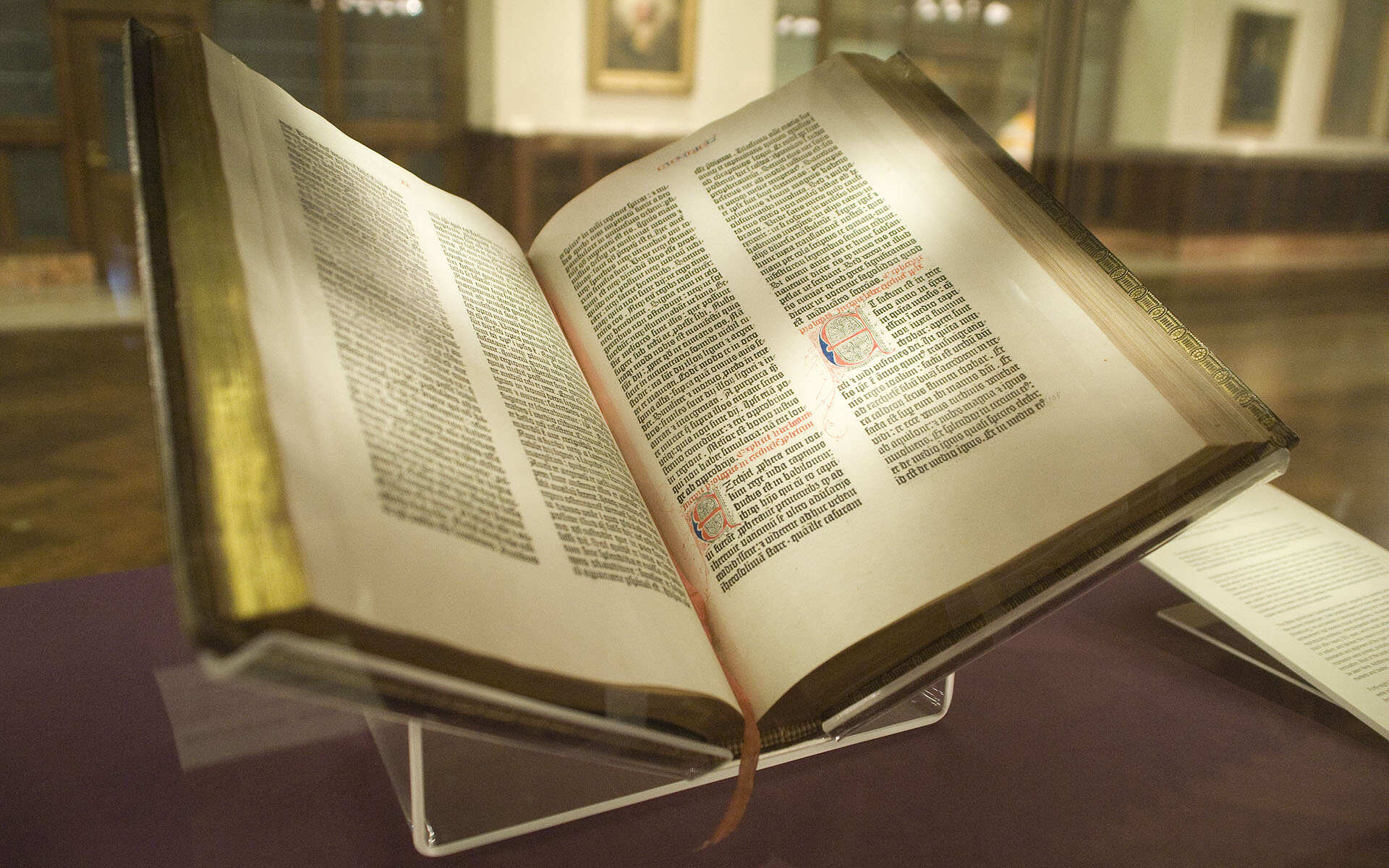
Ever wondered why the Gutenberg Bible is so famous? This ancient book isn't just any old text; it's a groundbreaking piece of history. Created by Johannes Gutenberg in the 1450s, it was the first major book printed using movable type. This innovation revolutionized the way books were made, making them more accessible to people. Imagine living in a time when books were rare treasures, painstakingly copied by hand. Then, suddenly, a machine could produce multiple copies quickly and accurately. The Gutenberg Bible symbolizes the dawn of the information age, changing how knowledge spread across the world. Curious to learn more? Let's dive into 21 fascinating facts about this iconic book.
Key Takeaways:
- The Gutenberg Bible, printed in 1455, revolutionized book production with movable type. It's a rare, valuable, and influential document that shaped culture, religion, and the Information Age.
- Gutenberg's invention of the printing press led to the mass production of books, spreading knowledge and fueling the Renaissance. The Bible's impact continues today through preservation, digitization, and modern printing techniques.
The Gutenberg Bible: A Revolutionary Achievement
The Gutenberg Bible, also known as the 42-line Bible, holds a special place in history. It was the first major book printed using movable type, marking the start of the "Gutenberg Revolution" and the age of the printed book.
-
Johannes Gutenberg invented the printing press around 1440 in Mainz, Germany. This invention revolutionized the way books were produced.
-
The Gutenberg Bible was completed in 1455. It took several years of meticulous work to finish.
-
Only 49 copies of the Gutenberg Bible are known to exist today. Some are complete, while others are just fragments.
-
The Bible was printed in Latin, the scholarly and liturgical language of the time.
-
Each page of the Gutenberg Bible contains 42 lines of text, hence the name "42-line Bible."
-
The Bible was printed on both paper and vellum. Vellum, made from animal skin, was more expensive and durable.
The Printing Process and Its Impact
Gutenberg's printing process was groundbreaking. It allowed for the mass production of books, making literature more accessible to the public.
-
Gutenberg used movable type, which meant individual letters could be reused to print different pages. This was a significant improvement over hand-copying texts.
-
The printing press could produce about 180 copies of the Bible. This was an enormous number compared to the time-consuming process of hand-copying.
-
The Gutenberg Bible is known for its high quality. The text is clear, and the layout is carefully designed.
-
The Bible was illuminated by hand. After printing, artists added colorful decorations and initials to each page.
-
Gutenberg's invention led to the spread of knowledge. Books became more affordable, and literacy rates increased.
-
The Gutenberg Bible is considered one of the most valuable books in the world. A complete copy can be worth tens of millions of dollars.
Cultural and Historical Significance
The Gutenberg Bible is not just a book; it represents a turning point in history. Its creation had far-reaching effects on culture, religion, and society.
-
The Bible played a crucial role in the Protestant Reformation. The ability to print and distribute religious texts helped spread new ideas.
-
Gutenberg's press is often credited with starting the Renaissance. The increased availability of books fueled intellectual and artistic growth.
-
The Bible's production marked the beginning of the Information Age. It paved the way for the mass communication we have today.
-
The Gutenberg Bible is a UNESCO World Heritage document. It is recognized for its historical and cultural importance.
-
The Bible's creation demonstrated the power of innovation. Gutenberg's press combined existing technologies in a new way, leading to a revolutionary outcome.
Preservation and Modern Influence
Despite being over 500 years old, the Gutenberg Bible continues to influence the world. Efforts to preserve and study it are ongoing.
-
Many copies of the Gutenberg Bible are housed in libraries and museums. Institutions like the British Library and the Library of Congress have copies.
-
The Bible has been digitized. High-resolution images of its pages are available online, allowing people worldwide to study it.
-
The Gutenberg Bible inspired the creation of the Gutenberg Project, an initiative to digitize and make available a vast number of books.
-
The Bible's legacy lives on in modern printing. The principles of movable type and mass production are still used in today's publishing industry.
The Gutenberg Bible's Lasting Impact
The Gutenberg Bible isn't just a book; it's a symbol of human progress. This masterpiece, printed in the 1450s, marked the dawn of the printing revolution. Before Gutenberg, books were painstakingly copied by hand, making them rare and expensive. His invention changed all that, making knowledge accessible to many more people.
The Gutenberg Bible also played a crucial role in the spread of the Renaissance and the Reformation. By making texts more available, it fueled intellectual and cultural movements that shaped modern Europe. Its influence can still be felt today in our digital age, where information is at our fingertips.
In short, the Gutenberg Bible isn't just an old book; it's a cornerstone of modern civilization. Its impact on education, religion, and culture is immeasurable, proving that sometimes, a single innovation can change the world.
Frequently Asked Questions
Was this page helpful?
Our commitment to delivering trustworthy and engaging content is at the heart of what we do. Each fact on our site is contributed by real users like you, bringing a wealth of diverse insights and information. To ensure the highest standards of accuracy and reliability, our dedicated editors meticulously review each submission. This process guarantees that the facts we share are not only fascinating but also credible. Trust in our commitment to quality and authenticity as you explore and learn with us.
